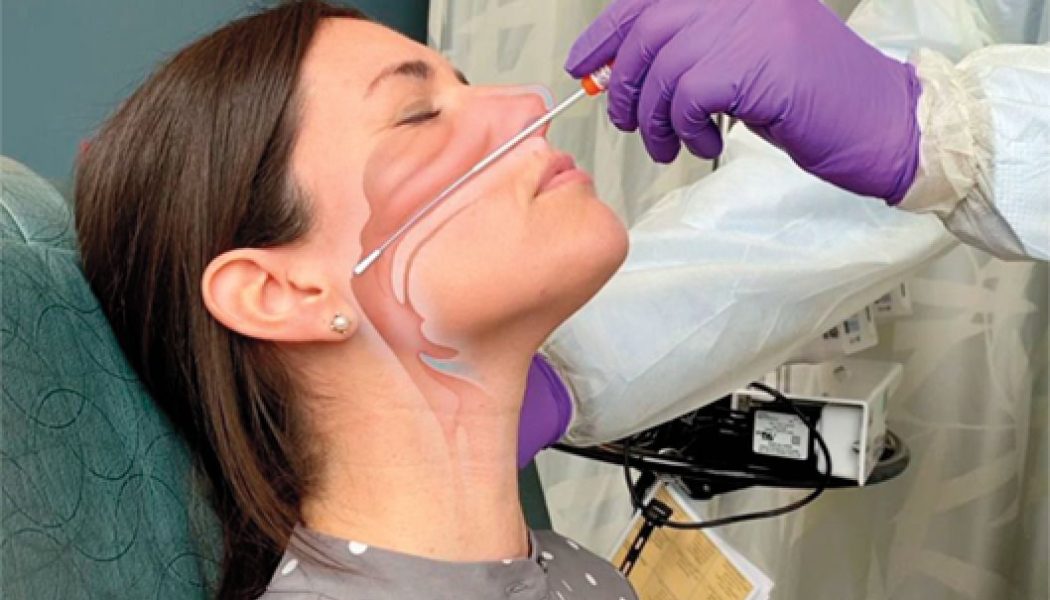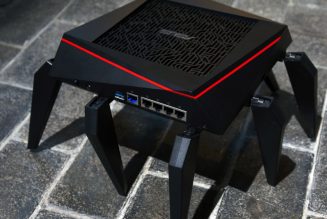If you’ve been tested for COVID-19 then you’ve probably experienced the unpleasantness of a nasal swab. Someone takes a long-handled cotton swab and sticks it up your nose — way up your nose — until it reaches the back of the mucus-cave that is your nasal cavity. Upon arrival they give the swab a good twirl to collect your secretions and beat a merciful retreat. I can say from personal experience that it’s a uniquely unpleasant sensation. It’s something that just feels wrong, like the opposite of scratching an itch.
That’s perhaps why I was so unsettled by the sight of this autonomous nasal swab robot developed by Taiwanese medtech startup Brain Navi. Of all the entities I don’t want sticking cotton swabs up my nose, an industrial robot arm is pretty high on the list, right between an excitable toddler and a trained mountain gorilla. A nasal swab requires trust.
Nevertheless, the bot exists, and Brain Navi’s case for it is more compelling than you might think. As mass-testing ramps up globally, the company argues that automating testing could reduce infections and free up medical staff to tackle more pressing work. If we can get over our first impressions of a robot wielding a cotton swab, says the company, it may benefit us all. Doctors The Verge spoke to about the machine, though, were a bit more skeptical about its chances in the real world.
First, though, let’s talk about how it all works. To begin the procedure, a patient dons a nasal clip that the machine uses to orientate itself. They then place their head in a metal bracket similar to those used for eye examinations (gripping the handle bars like you’re riding the world’s worst rollercoaster is apparently optional). A depth-sensing camera then scans their face and measures the distance from nostril to ear canal, which Brain Navi says is a reliable proxy for the depth of the nasal cavity, and helps the robot navigate safely inside you.
The robot then retrieves a cotton swab from it base and, with torturous slowness, approaches the victim patient. It inserts the swab, twirls it, then withdraws, placing the sample in a sterile tube for transportation and analysis. You can watch it all happen below:
[embedded content]
Let’s be clear: this does not look like fun! This looks mildly terrifying! There’s something about the slowness and inevitability of the robot’s movements that feels like an implicit threat, and the whole operation has the vibe of an alien lobotomy.
Brain Navi is well aware of how it all looks. “Our founder Jerry [Chen Chieh-Hsiao] was the first one to have a nasal swab from the robot and he was terrified,” a spokesperson for the company, Zoe Lee, told The Verge. But she, says, it’s all a matter of familiarity. “I think people will be frightened because it’s a new thing but that’s normal. We’ve heard the feedback and are figuring out how to reduce this terrifying feeling.”
The robot has no pressure sensors to know if it’s accidentally pushing into your flesh, but Lee says the 3D imaging provides accurate and safe guidance. She also says that if someone feels uncomfortable or in pain they can simply move away. “We’re not chasing you around!” she adds.adds
The machine itself is adapted from Brain Navi’s main product: an industrial robot arm that helps prepare patients for brain surgery. This recently finished clinical trials in Taiwan and is waiting on regulatory approval. The swab machine, meanwhile, has only been tested on Brain Navi’s own employees (without problem) and has been approved for its own trials.
:no_upscale()/cdn.vox-cdn.com/uploads/chorus_asset/file/21805505/nejmvcm2010260_f3.jpeg)
Lee says Brain Navi’s CEO was motivated to create the machine by the SARS epidemic in 2002-4. A friend of Chen’s was working as a doctor during the outbreak and died because of the disease. “This is the reason why we want to help and develop a robot to help these [healthcare workers]” says Lee. “They’re heroes for us, fighting the pandemic.”
Lee says Brain Navi is in talks with Taiwan’s Taoyuan international airport about the possibility of testing the robot on incoming passengers. As she explains, this would be the perfect show-case for the machine’s benefits. “Every country wants to reopen their economy, and to reopen safely, large scale testing [at airports] might be the key,” says Lee. She says the robot can perform a swab in just two minutes and will work non-stop.
Doctors The Verge spoke to about Brain Navi’s machine were skeptical though. They noted that medical staff aren’t in that much danger when taking nasal swabs as long as they have the correct protective gear, and that the robot was slower than humans. Andrew Lane, director at the Johns Hopkins Sinus Center, told The Verge that the basic concept was reasonable and interesting, but that he would want to see more details about the machine’s safety procedures, particularly when it comes to navigating the nasal cavity.
“Nasal anatomy can be variable — the nasal septum is often deviated to one side or the other, and there are structures in the nose that can vary in size and shape,” Lane told The Verge over email. “As a result, it is necessary to insert the nasopharyngeal swab carefully with attention to whether resistance is being met and/or the patient is feeling pain (beyond usual unpleasant feeling of have the swab done). With the head somewhat restrained, my concern would be that the machine might either malfunction or simply be improperly designed, such that the swab goes somewhere that it shouldn’t.”
Lane notes that if the angle of approach when performing a swab is also incorrect then there’s a chance for serious damage to occur. “The worst case scenario would be the swab being pushed through a sinus wall into the eye or brain,” he notes.
One doctor working in the UK’s National Health Service (NHS) told The Verge that their big concern would be the lack of communication with the patient. If you were having a nasal swab for the first time, would you feel safe if you couldn’t talk through what was happening?
“Nasal swabs are painful even when you do it to yourself, and I think anyone would be extremely uncomfortable letting a machine do that,” said the doctor. “I think for me and for the majority of patients I’ve come across, they would want a human who understands what it’s like to be on the other side of the swab.”
Right now, that’s the sort of empathy robots can’t just deliver on the end of a swab.










